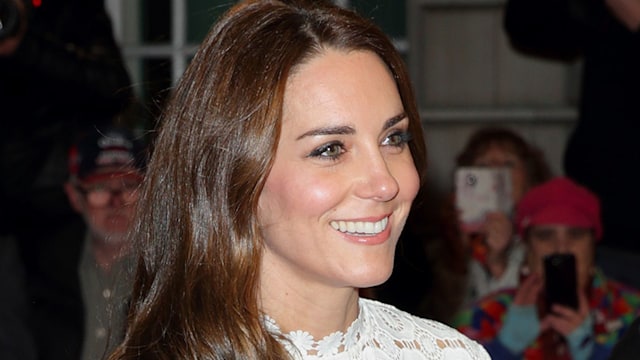The Duchess of Cambridge is due to welcome her third child in April and rumours are already circulating as to where the royal baby will be born. Kate gave birth to both Prince George and Princess Charlotte in the Lindo Wing of St Mary's Hospital, Paddington but this time it seems the Duchess may opt for a home birth. A royal source recently told The Express newspaper: "Catherine has said she would love to have her baby at home. She has discussed it with William and he is being very supportive. Above all they both agree that having a home birth would save a massive intrusion into the day to day running of any hospital where she gave birth."
The Duchess of Cambridge with Princess Charlotte
Home births are not atypical of the royal family - the Queen was delivered by Caesarean section at her maternal grandfather's London house and she gave birth to her four children at home. Like the Queen and possibly Duchess Kate, many women choose to have their babies at home for a variety of reasons, from comfort and privacy to wanting to remain with their family. For others though, the thought of giving birth out of hospital is a daunting prospect though, should there be a complication.
Here, Abigail Wood, from the National Childbirth Trust, explains the pros and cons of having a baby at home…
Why choose a home birth?
"There are a whole host of reasons why women may plan a home birth," says Abigail. "It could be because they have previously had a positive birth experience and now feel confident about having a home birth. It could also be because they have had a previous negative birth experience in hospital and don’t want a repeat of it. They may want to feel more in control of their birth experience or want privacy. "
What happens during a home birth?
Abigail explains: "If you plan to have a home birth, a midwife will normally bring a home birth kit to your home towards the end of your pregnancy. Ask her what is provided and if there is anything else you should have ready. Some midwives suggest preparing a birth box with items such as protective coverings for floors and large towels to keep the baby warm. It’s a good idea to pack an emergency bag too in case you have to transfer to hospital with a change of clothes for you and the baby plus nappies and other things you would need if you were going to give birth in hospital, such as sanitary pads.”
READ: Broody Holly Willoughby admits she has 'serious bump envy'
"One perception about a home birth is that it is messy but in reality there is little mess and the protective coverings will protect surfaces and furniture around you. Afterwards the midwife will clear up and remove the placenta and umbilical cord. Many people who choose to have a home birth also hire a birth pool.
Another benefit, says Abigail, is you can choose to have more than one birth partner present. "You may want more than one birth partner, your children or a doula present as well as a midwife. Some women choose to pay for a private midwife which gives them a better chance of receiving continuous one-to-one care."
How does a midwife deal with any complications during a home birth?
"Midwives are trained and equipped to deal with most problems during a home birth," explains Abigail. "There is some equipment the midwife is unable to use when you have your baby at home, for example an epidural is not available nor are ventilators." Abigail says that some complications which can arise include: labour not progressing, blood loss after birth, the baby being slow to breathe, or a looped umbilical cord. "Your midwife will monitor your baby's heart and your condition regularly through labour, and will advise that you transfer to hospital if she has any concerns about the health of either of you. The aim is to transfer well before a situation becomes an emergency."
LOOK: The £1 secret behind Duchess Kate's stunning updos!
When is a home birth not advised?
"A safe home birth is not possible if you have a full placenta praevia (low lying placenta covering the cervix), or if your baby is in a transverse lie (sideways across the womb) because these births require a caesarean section. Many women also choose to have their baby in a hospital if they have severe health problems, or if their baby is likely to need medical attention immediately after they are born, for example if the baby is premature. If your midwife does not consider you a good candidate for having your child at home, ask her to go through the reasons to help you weigh up the pros and cons for yourself."
More information about home births can be found on the NCT website at www.nct.org.uk
